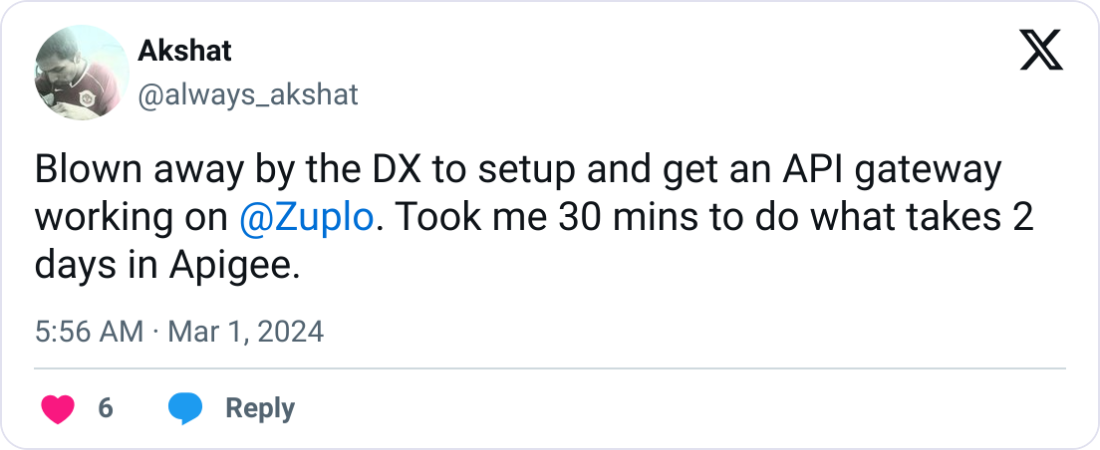Moving your applications to the cloud feels like trading your cozy security blanket for a thin sheet in unfamiliar territory. But don't worry – you're not alone in this brave new world. Cloud-native security isn't just another buzzword to impress your colleagues – it's your new reality, and mastering it is non-negotiable for survival. 🚀
The numbers tell a compelling story: according to CrowdStrike, 63% of organizations faced more cloud-based threats last year. That's not just a statistic – it's a wake-up call. Traditional security was like a medieval castle with solid walls and one entrance. Cloud architecture? It's a sprawling metropolis with countless entry points where attackers can slip through misconfigurations, insecure APIs, or weak access controls. Let's explore how to fortify your cloud-native applications against today's evolving threats.
- The New Cloud Security Landscape: Where Perimeters Disappear
- Security Battlegrounds: Where Cloud-Native Vulnerabilities Hide
- Battlefield-Tested Strategies: Security Approaches That Actually Work
- Always-On Security: Continuous Testing and Monitoring
- Shared Security: It Takes Two to Protect the Cloud
- Open Source Arsenal: Free Tools That Punch Above Their Weight
- Crisis Management: Incident Response for Cloud-Native Environments
- Security Culture: Making Protection Everyone's Priority
- The Security Horizon: Emerging Trends Reshaping Protection
- Beyond Tools: Your Cloud Security Journey
The New Cloud Security Landscape: Where Perimeters Disappear
Cloud-native applications have completely rewritten the security playbook. The network perimeter hasn't just changed—it's evaporated entirely, leaving you with a complex mesh of services and APIs that create an expanded attack surface.
The Expanded Attack Surface in Cloud-Native Applications
In this new world, resources scale up and down in minutes, making security configurations nearly impossible to track without specialized tools. CrowdStrike highlights this challenge: when your infrastructure is constantly changing, traditional security approaches simply can't keep up.
Here are the security challenges you’re most likely to end up facing:
- Misconfigurations: These are the unlocked doors of your cloud environment—APIs, network rules, containers, Kubernetes settings. AquaSec research shows these simple mistakes cause most cloud data breaches. It's rarely sophisticated attacks that compromise systems, but rather the equivalent of leaving your keys in the ignition.
- Container vulnerabilities: Containers make deployment dreams come true but can turn security into your worst nightmare. SentinelOne highlights how insecure images and runtime issues create perfect entry points for attackers, smuggling in more than just your application code.
- Poor API security: In microservices, APIs connect everything. Weak authentication or validation on these pathways leads straight to data theft. Ensuring secure API configurations is essential to prevent attackers from gaining access to your sensitive data. Unsecured APIs essentially offer attackers VIP tours of your sensitive data.
Evolving Security Strategies That Actually Work
These approaches make real differences in cloud-native environments:
- Shift-Left Security: Catch problems before they reach production by embedding security controls into CI/CD pipelines, utilizing tools like GitHub Actions automation, as recommended by Jit.
- Zero Trust Architecture: "Trust no one" isn't paranoia—it's smart security. Every access request needs verification, regardless of origin.
- Automated Security Controls: Manual processes can't match cloud speed. Deploy tools that automatically adjust as applications scale and change.
- Continuous Monitoring: Real-time visibility across containers, APIs, and network traffic isn't optional—it's essential for survival.
Security Battlegrounds: Where Cloud-Native Vulnerabilities Hide
 Cloud-native apps deliver amazing scalability but serve up a whole new menu of
security headaches. Let's dig into the issues that keep security professionals
awake at night.
Cloud-native apps deliver amazing scalability but serve up a whole new menu of
security headaches. Let's dig into the issues that keep security professionals
awake at night.
The Configuration Maze: Where Complexity Breeds Vulnerability
Cloud-native environments aren't just complex—they're Rubik's cubes that keep adding dimensions while you're trying to solve them. CrowdStrike found that misconfigurations top the list of cloud vulnerabilities, creating:
- Access controls so permissive they practically invite hackers in
- Storage buckets visible to everyone on the internet
- APIs without proper security gates
- Network settings with dangerous gaps
Each microservice adds another potential entry point, and your security is only as strong as your weakest component.
Monitoring Blind Spots: What You Can't See Will Hurt You
Monitoring cloud-native systems with traditional tools is like watching a 4K movie on a flip phone—technically possible, but you'll miss all the important parts. AquaSec points out this visibility gap creates:
- Threats lurking undiscovered for days or weeks
- Security snapshots that expire the moment they're captured
- Blind spots where data flows between services
Without unified monitoring, threats can spread while you're still clicking between dashboards trying to understand what's happening.
Threat Detection Challenges: Finding Needles in Moving Haystacks
Catching threats in distributed systems is incredibly difficult. SentinelOne highlights how containers create unique security challenges:
- Containers vanish before investigations complete (like criminals burning evidence)
- Shared kernels mean one breach could affect multiple containers
- Rapid deployments outpace security measures
To tackle these challenges effectively, you need:
- Automated tools that manage configurations—humans simply can't keep up
- Cloud-native security platforms providing complete visibility—no more blind spots
- DevSecOps practices that integrate security at every step—not just as an afterthought
- Specialized container security tools—because containers require special attention

Over 10,000 developers trust Zuplo to secure, document, and monetize their APIs
Learn MoreBattlefield-Tested Strategies: Security Approaches That Actually Work
The cloud-native world moves at lightning speed, and your security needs to match that pace. Here are strategies that deliver real results in production environments.
Shifting Security Left Where It Belongs
Moving security earlier in development isn't just smart—it's essential for cloud-native apps. With DevSecOps:
- CI/CD pipelines catch security issues before production deployment
- Developers spot vulnerabilities while writing code, not weeks later when fixes cost exponentially more
- Everyone shares security responsibility, not just the isolated security team
Infrastructure as Code: Securing Your Digital Blueprint
Your infrastructure is now code, and that code needs security too:
- Run tools like Checkov or TFLint to catch misconfigurations before they become real infrastructure
- Use version control for all IaC files to track changes and enable quick rollbacks
- Automate security checks to prevent human error from creating vulnerabilities
Access Control That Actually Controls Access
Strong identity and access management forms your foundation:
- Verify everything with zero trust principles—nothing gets automatic trust
- Implement role-based access control (RBAC) and ABAC to provide precise, minimal permissions
- Deploy MFA everywhere to prevent credential theft from becoming breaches
Securing Your Digital Highways
APIs connect your microservices, making them prime targets. Ensuring strong AI API security is essential, especially as AI models are increasingly exposed via APIs.
- Enforce strong authentication for every API endpoint—no exceptions—is crucial, especially if you are monetizing secure APIs.
- Set rate limits to prevent API hammering. When you promote your API securely, you can maximize reach without compromising security.
- Use mutual TLS (mTLS) for service-to-service communication to verify both sides, and consider a hosted API gateway to streamline security implementations.
Encryption Where It Matters
Data protection isn't optional in the cloud:
- Encrypt data everywhere—at rest and in transit
- Implement end-to-end encryption for your most sensitive information
- Regularly rotate encryption keys and store them securely
Especially when monetizing proprietary data securely, data encryption is critical.
Always-On Security: Continuous Testing and Monitoring
In cloud-native environments, security testing isn't an annual event—it must be constant, automated, and integrated into your processes.
Security Automation in CI/CD
Catching security issues early saves time, money, and reputation. Embedding security checks into CI/CD pipelines is non-negotiable.
Essential security pipeline components include:
- SAST scans to find code vulnerabilities before production
- DAST testing to probe running applications for weaknesses
- Dependency scanners like OWASP Dependency-Check or Snyk to flag vulnerable libraries
When Twilio adopted this approach, they managed 30,000 releases annually without security bottlenecks. Their approach? Giving developers security tools directly so issues get fixed at the source.
Digital Surveillance: Continuous Monitoring That Actually Works
You can't secure what you can't see. Real-time monitoring with effective API monitoring tools provides visibility across your cloud environment and helps spot trouble before disasters occur.
Security metrics that truly matter include:
- Threat detection and response times (MTTD and MTTR)
- Deployment frequency and configuration changes
- Compliance violations and audit success rates
- Access patterns and attempted intrusions
- API vulnerabilities and misconfigurations
And here are some of the top monitoring tools that have proven themselves in production environments:
- Prometheus: Open-source metrics collection that integrates with everything
- Native cloud tools like AWS CloudWatch and Azure Monitor
- Google Cloud's Security Command Center: Centralized security management
- Elastic Stack: Powerful log analysis for detecting unusual patterns
Shared Security: It Takes Two to Protect the Cloud

Cloud security isn't just your provider's job or just your job—it's both. The shared responsibility model divides security duties between you and your cloud provider, with clear boundaries that must be understood.
Knowing Who Protects What
The responsibility split varies depending on your service model (IaaS, PaaS, or SaaS):
- Your provider typically handles:
- Physical hardware security
- Network infrastructure
- Managed services
- Platform uptime
- You're responsible for:
- Access controls and permissions
- Data encryption
- Application and OS security
- Cloud configurations
Getting this division wrong is dangerous—misconfigurations drive many cloud breaches. And remember: your customers won't care who was responsible when their data gets leaked.
Practical Implementation Steps
To protect your portion of the cloud:
- Integrate security into development: Build DevSecOps practices that catch issues early, giving developers tools to find and fix threats themselves.
- Trust nothing automatically: Apply zero-trust principles—verify every user, device, and connection without exception.
- Secure containers and orchestration: Regularly scan container images and protect your Kubernetes API server rigorously.
- Monitor comprehensively: Deploy CNAPP platforms for complete visibility and automated scanning across your environment.
- Hunt configuration weaknesses: Run automated audits to find the configuration errors that most commonly lead to breaches.
Team Alignment: Making Shared Responsibility Work
To implement shared responsibility effectively:
- Document responsibilities clearly: Work with your cloud provider to create a responsibility matrix using tools like Wiz's matrix to prevent gaps.
- Train your people: Most teams don't fully understand the shared model—only 13% of organizations do. Close this knowledge gap with engaging training.
- Consider managed security services: Leverage third-party tools to simplify security management when resources are limited.
- Master compliance requirements: Understand exactly what regulations like GDPR or HIPAA require in cloud environments.
- Study cautionary tales: Learn from breaches like the Capital One incident to avoid similar mistakes.
Open Source Arsenal: Free Tools That Punch Above Their Weight
Open source security tools aren't just budget-friendly alternatives—they're often the best tools for the job, offering flexibility, community support, and capabilities that match or exceed commercial options.
The Open Source Advantage
- Community intelligence: Open source tools leverage collective expertise worldwide, with vulnerabilities often fixed faster than in commercial products.
- Customization freedom: Need specific features? Modify the code to fit your exact requirements and integrate seamlessly with your systems.
- Transparency guaranteed: Nothing stays hidden in open source—you can audit the code yourself rather than trusting vendor claims.
- Enterprise-grade without enterprise pricing: Many open source security tools deliver capabilities rivaling expensive commercial solutions.
Cloud-Native Security Tools Worth Deploying
- OWASP ZAP: A powerful web application scanner that detects vulnerabilities attackers could exploit—like having a friendly ethical hacker on your team.
- Falco: Acts like a security camera for your containers and Kubernetes clusters, detecting unexpected behavior in real time.
- Trivy: A versatile scanner that checks containers, code, and git repositories for vulnerabilities—offering multiple layers of protection in one tool.
- Prometheus: Best known for monitoring, but also valuable for tracking security metrics that signal potential issues.
- OpenSCAP: Helps create and manage standardized security policies—making compliance more streamlined and consistent.
Combining Open Source and Commercial Tools
Open source and commercial tools can complement each other effectively:
- Use Falco for runtime threat detection, then feed alerts into commercial SIEM systems for analysis
- Run Trivy scans in CI/CD pipelines alongside commercial scanning tools for comprehensive coverage
- Let OpenSCAP handle basic compliance checks while commercial tools manage complex policy enforcement
Crisis Management: Incident Response for Cloud-Native Environments
When it comes to cloud-native security, hope for the best but prepare for the worst. A solid incident response plan isn't just a good idea—it's your lifeline when things inevitably go wrong. 🔥
Cloud-Ready Response Planning
Build an incident response plan tailored for cloud environments:
- Assign clear responsibilities: Ensure everyone understands their role and how cloud incident response differs from traditional approaches.
- Establish communication channels proactively: When incidents occur, you need to share information immediately—not waste time figuring out who to contact.
- Create cloud-specific playbooks: A compromised container requires different steps than a traditional server breach—generic plans won't suffice.
- Deploy automated alerts: The faster you detect issues, the faster you can contain them before they spread throughout your environment.
Team Readiness: Training for the Cloud Battlefield
Your team needs practical preparation for cloud incidents:
- Run realistic tabletop exercises simulating actual cloud attacks—nothing prepares teams like hands-on experience
- Train everyone on your cloud provider's security tools before incidents occur
- Keep your team current on emerging cloud threats through regular training updates
Gateway Guardians: Leveraging API Management for Security
API gateways serve as your front-line defense:
- Monitor API traffic patterns to identify unusual activity before breaches occur
- Use gateways to enforce security policies and interrupt attacks in progress, including robust API access control
- Deploy distributed federated gateways to respond to threats closer to their source
Practice Makes Perfect
Preparation through practice is essential:
- Test your response plan regularly with realistic cloud breach simulations
- Include scenarios specific to your environment, whether multi-cloud or hybrid
- Update your plan based on lessons learned from each simulation
Security Culture: Making Protection Everyone's Priority
Security isn't just about tools and technology—it's about people. Building a security-first culture means weaving security awareness throughout your organization, making your cloud-native applications significantly harder to breach.
Knowledge as Defense: Education and Training
A team that recognizes security risks serves as your best early warning system:
- Conduct security sessions for all departments—not just IT
- Provide developers with specialized secure coding training
- Keep everyone updated on emerging threats through regular briefings
Measurement and Improvement: Security Benchmarking
You can't improve what you don't measure:
- Establish meaningful security metrics relevant to your business
- Regularly assess your performance against these benchmarks
- Apply insights to strengthen security where it matters most
This data-driven approach focuses resources where they'll deliver maximum impact, replacing gut feelings with evidence-based decisions.
Security as Everyone's Job
When everyone owns a piece of security, gaps become less likely to form:
- Create safe channels for reporting potential issues without blame
- Empower developers to make security decisions during development
- Consider security in all business decisions, not as an afterthought
Security as Code: The Programmable Approach
Coding your security practices makes them consistent, repeatable, and testable:
- Define secure cloud resources using Infrastructure as Code
- Build security checks into CI/CD pipelines to catch issues early
- Automate vulnerability scanning to find problems before attackers do
The Security Horizon: Emerging Trends Reshaping Protection
Two major forces are reshaping how we protect cloud-native applications: serverless computing with immutable infrastructure, and artificial intelligence in security operations.
Protecting What You Can't See
Serverless computing and immutable infrastructure transform security approaches:
- Smaller attack surfaces: Serverless functions give attackers less infrastructure to target, with cloud providers handling underlying systems.
- Ephemeral resources: Functions may run for milliseconds, making traditional monitoring obsolete—security tools must operate at serverless speeds.
- Immutable deployment: Replacing components instead of patching eliminates configuration drift and ensures consistency.
- Supply chain vigilance: When you don't manage infrastructure, dependencies become critical security concerns, as the SolarWinds breach demonstrated.
Machine Intelligence Against Machine Threats
AI is transforming security from reactive to proactive:
- Pattern recognition at scale: AI systems analyze vast datasets to identify subtle attack patterns humans would miss.
- Machine-speed response: AI-powered systems respond to threats in milliseconds, containing breaches before they spread.
- Predictive security: Machine learning algorithms can forecast where vulnerabilities might appear, enabling preemptive fixes.
- Automated compliance: AI tools continuously verify your environment against security policies and regulations, flagging issues automatically.
- Context-aware access control: AI analyzes behavior patterns to detect anomalies—like when a developer who typically works 9-5 suddenly logs in at 3 am from overseas.
These trends fundamentally reshape cloud-native security. To stay ahead, invest in AI-enhanced security tools, train your team on emerging technologies, and continuously reassess your security approach.
Beyond Tools: Your Cloud Security Journey
Implementing effective security for cloud-native applications isn't something you do once—it's a continuous journey requiring daily vigilance. And the tools we've discussed, from API gateways to security automation platforms, provide the closest thing to security superpowers when implemented properly.
Ultimately, though, cloud-native security depends on people. A security-first culture with trained teams makes the critical difference between vulnerability and resilience. Give your people the knowledge and tools they need, and security becomes organizational DNA rather than a department that blocks progress.
Ready to transform your API performance and unlock powerful behavioral insights? With Zuplo's developer-focused interface and easy-to-deploy optimization policies, you can quickly bridge the gap between legacy limitations and modern expectations. Sign up for a free Zuplo account today and start building APIs that truly deliver for your users.